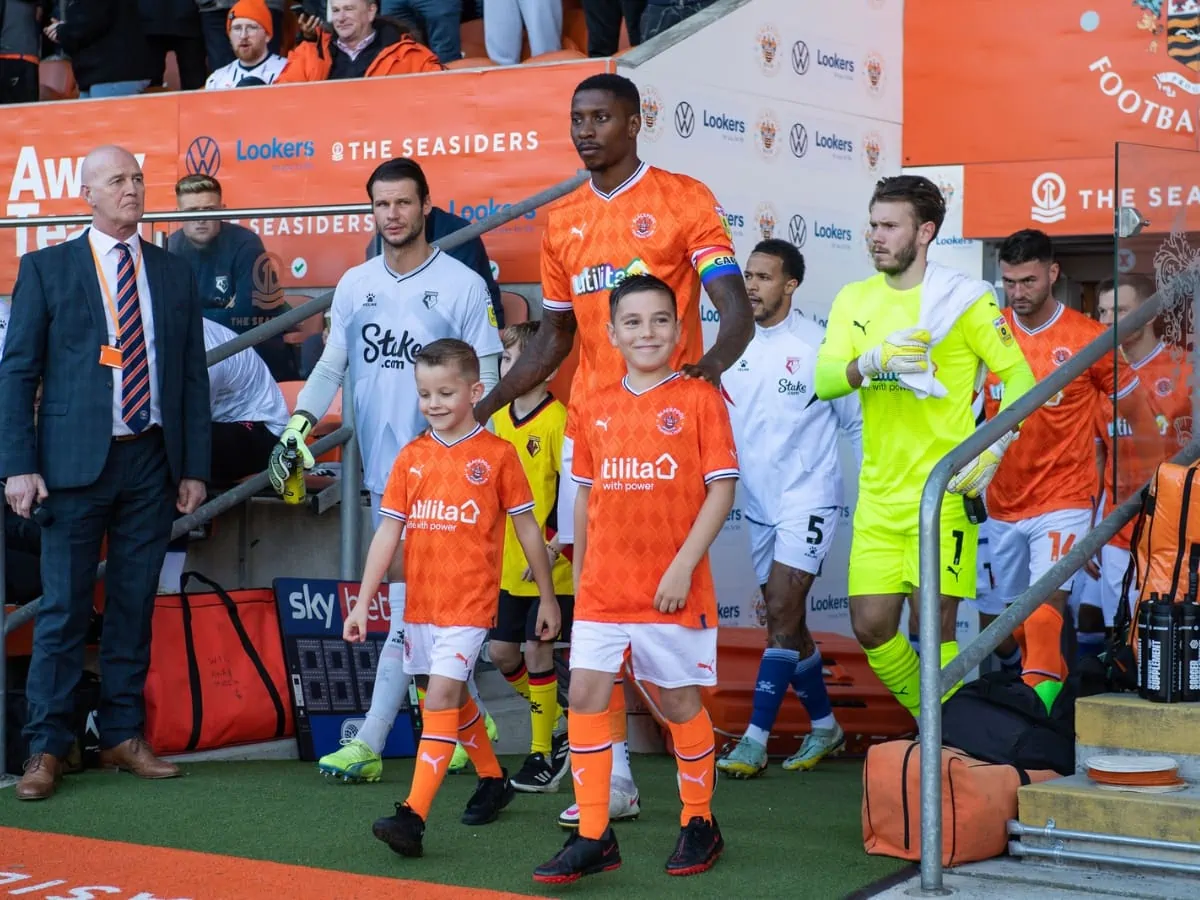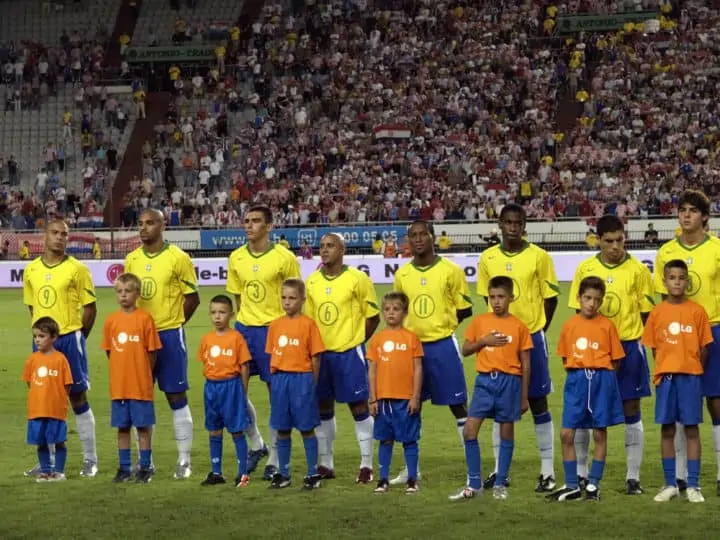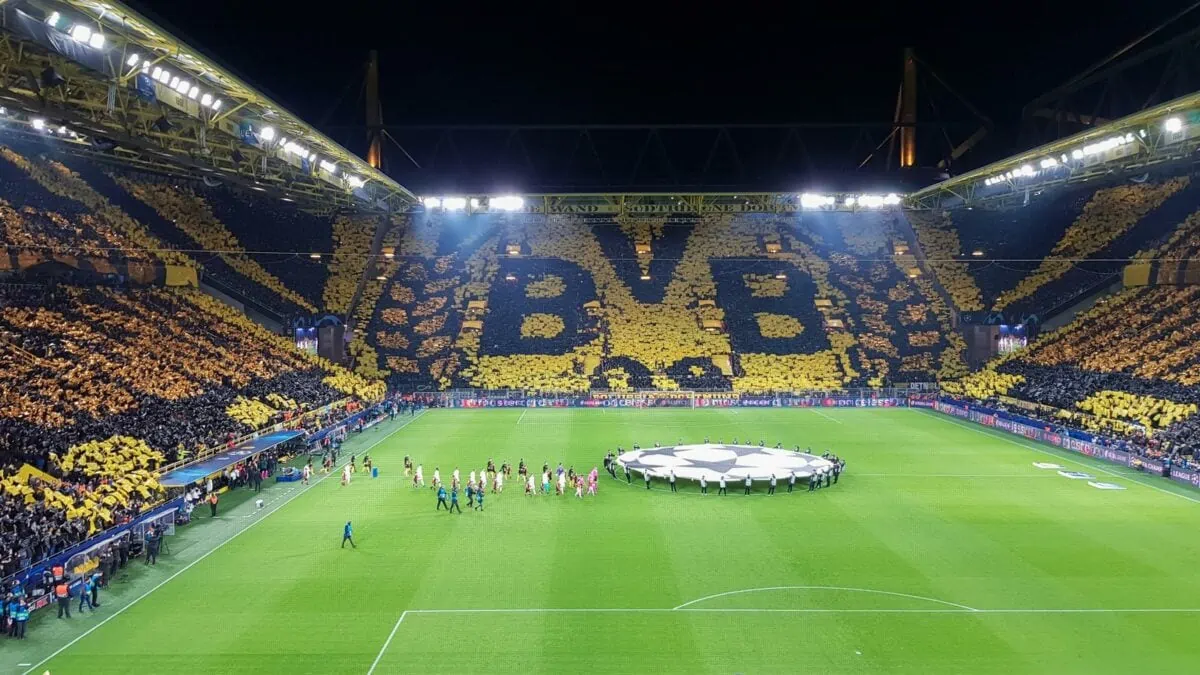Share the post "Soccer Players With Mascots (Reasons + Benefits)"
Watching soccer, you’ll notice a player walking onto the field with a child before a game. These children are called child mascots – also game mascots.
We will examine why there are child mascots, what it means for mascots and the benefits.

Why do soccer players Walk Out With Children Before a game?
When walking onto the field before a game, soccer players hold children’s hands for 4 reasons: promote a campaign, fulfill a child’s dream, promote a healthy image, and boost revenue.
Let’s take a closer look at these 4 reasons.

1. Promote a campaign
Soccer is the most popular sport in the world, and it uses this popularity to promote social campaigns that can help people.
Child mascots became popular at the 2002 World Cup to promote the UNICEF ‘Say Yes for Children’ campaign.
This campaign focused on children’s rights and helping children who were suffering throughout the world.
FIFA Partnership
So, FIFA partnered with UNICEF for the 2002 World Cup to promote this good cause. Players came out onto the field holding children’s hands. And that’s how they promoted the campaign.
The children wore FIFA/UNICEF ‘Say Yes’ t-shirts for the world to see.
Child mascots walked out with the players for every game of the tournament. This was a great way to promote a worthy cause and expose it to the world.
2. Fulfil a child’s dream
A lot of children around the world love the game of soccer. They watch it, play games with their friends at school or home, play soccer video games, and discuss big games with their friends.
So, as you can imagine, it’s a childhood dream for many kids to walk onto the field for a big game. Being a child mascot can fulfill this dream for many kids.
It’s a dream come true for them to walk onto the field with their soccer heroes. And imagine the feeling of them walking onto the field in front of a packed stadium of cheering fans.
Lifetime Experience
This is an experience of a lifetime for child mascots. But wait, that’s not the only dream a child mascot can fulfill. It can motivate children to realize their dreams of being soccer players.
Being on the field before a big game can show kids that they can achieve their dreams. So, they can also get a boost in fulfilling their dreams of being a soccer player.
That’s a great thing about having child mascots in soccer.

3. Promote a healthy image
Having child mascots promotes a healthy image for the soccer club and the game. When players walk onto the field with child mascots, it shows that soccer games are a safe place.
It shows that soccer games are family-friendly. So, child mascots promote a healthy image. Some say that child mascots were first used to protect the players from angry fans.
It would stop fans from throwing objects at players. Although we may never know if this is true, it’s extremely unlikely. It’s much more likely that child mascots were used to promote a healthy image.
Hooligans
In the 1980s and 1990s, soccer in England had a bad image because of soccer hooligans. Soccer games were often dangerous places to be for anyone. They indeed weren’t very family-friendly back then.
But the soccer authorities in England tried to get this damaging element out of the game of soccer. And it was in the late 1990s that child mascots started being used more regularly.
So, players likely came onto the field holding children’s hands to promote a healthy image. It showed that soccer had moved away from the dangerous era of hooliganism in England.
Family Friendly
Soccer was seen as family-friendly when kids walked onto the field with the players. This promotes a healthy image for the game.
Also, soccer clubs often work with local charities to select child mascots. This forms a connection between the club and the community. The club is involved in the community to improve it for everyone.
This promotes a healthy image for the club because it’s seen as helping people in the community. So, child mascots promote a healthy image for soccer and soccer clubs.
4. Boost revenue
Soccer clubs don’t only choose child mascots from local charities. They also offer paid packages for children to walk onto the field with the players.
So, if children aren’t associated with a charity, they can still get the chance to fulfill their dreams of being a child mascot. To do it, their parents have to pay for the experience.
Selling these packages is a boost of revenue for the soccer club. This might not amount to much for the wealthiest teams in world soccer, but it helps. Also, it’s a good revenue boost for less well-known teams.
Paid Packages
Teams in the lower leagues can use these paid packages to help with their expenses. They can help teams that are struggling financially because every little helps.
So, soccer clubs use these packages to boost revenue.

When players started Walking out with Mascots
Players started coming out with a child in the late 1990s. The first big game featuring child mascots was the 1999 FA Cup final in England between Manchester United and Newcastle United.
But only two children walked out with the players, one representing each team. Now, a child walks out with every player.
The 2000 European Championship was the first major international soccer tournament to feature child mascots.
Popularity
But it wasn’t until the 2002 World Cup that this became popular. As previously mentioned, FIFA partnered with UNICEF to promote a campaign to help children and protect them.
Child mascots are a big part of soccer now, with children walking out with players for every game. This is likely to continue because of the reasons we’ve outlined here.
Also, child mascots can create some hilarious moments. Look below at how this Chelsea child mascot pranked Steven Gerrard of Liverpool FC.
Now that you know why soccer players come out with a child, you don’t have to wonder about it when you watch games.
Share the post "Soccer Players With Mascots (Reasons + Benefits)"
Joel is a seasoned soccer journalist and analyst with many years of experience in the field. Joel specializes in game analysis, player profiles, transfer news, and has a keen eye for the tactical nuances of the game. He played at various levels in the game and coached teams - he is happy to share his insight with you.



